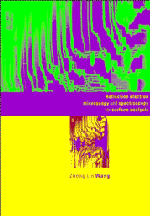Book contents
- Frontmatter
- Contents
- Preface
- Symbols and definitions
- 0 Introduction
- 1 Kinematical electron diffraction
- Part A Diffraction of reflected electrons
- Part B Imaging of reflected electrons
- Part C Inelastic scattering and spectrometry of reflected electrons
- 9 Phonon scattering in RHEED
- 10 Valence excitation in RHEED
- 11 Atomic inner shell excitations in RHEED
- 12 Novel techniques associated with reflection electron imaging
- Appendix A Physical constants, electron wavelengths and wave numbers
- Appendix B The crystal inner potential and electron scattering factor
- Appendix C.1 Crystallographic structure systems
- Appendix C.2 A FORTRAN program for calculating crystallographic data
- Appendix D Electron diffraction patterns of several types of crystal structures
- Appendix E.1 A FORTRAN program for single-loss spectra of a thin crystal slab in TEM
- Appendix E.2 A FORTRAN program for single-loss REELS spectra in RHEED
- Appendix E.3 A FORTRAN program for single-loss spectra of parallel-to-surface incident beams
- Appendix E.4 A FORTRAN program for single-loss spectra of interface excitation in TEM
- Appendix F A bibliography of REM, SREM and REELS
- References
- Materials index
- Subject index
9 - Phonon scattering in RHEED
Published online by Cambridge University Press: 18 January 2010
- Frontmatter
- Contents
- Preface
- Symbols and definitions
- 0 Introduction
- 1 Kinematical electron diffraction
- Part A Diffraction of reflected electrons
- Part B Imaging of reflected electrons
- Part C Inelastic scattering and spectrometry of reflected electrons
- 9 Phonon scattering in RHEED
- 10 Valence excitation in RHEED
- 11 Atomic inner shell excitations in RHEED
- 12 Novel techniques associated with reflection electron imaging
- Appendix A Physical constants, electron wavelengths and wave numbers
- Appendix B The crystal inner potential and electron scattering factor
- Appendix C.1 Crystallographic structure systems
- Appendix C.2 A FORTRAN program for calculating crystallographic data
- Appendix D Electron diffraction patterns of several types of crystal structures
- Appendix E.1 A FORTRAN program for single-loss spectra of a thin crystal slab in TEM
- Appendix E.2 A FORTRAN program for single-loss REELS spectra in RHEED
- Appendix E.3 A FORTRAN program for single-loss spectra of parallel-to-surface incident beams
- Appendix E.4 A FORTRAN program for single-loss spectra of interface excitation in TEM
- Appendix F A bibliography of REM, SREM and REELS
- References
- Materials index
- Subject index
Summary
Numerous inelastic scattering processes are involved in electron scattering. The mean-free-path length of inelastic scattering is about 50–300 nm for most materials, thus more than 50% of the electrons will be inelastically scattered if the specimen thickness is close to the mean-free-path length. Inelastic scattering not only affects the quality of REM images and RHEED patterns but also makes data quantification much more complex and inaccurate. In this chapter, we first outline the inelastic scattering processes in electron diffraction. Then phonon (or thermal diffuse) scattering will be discussed in detail. The other inelastic scattering processes will be described in Chapters 10 and 11.
Inelastic excitations in crystals
The interaction between an incident electron and the crystal atoms results in various elastic and inelastic scattering processes. The transition of crystal state is excited by the electron due to its energy and momentum transfers. Figure 9.1 indicates the main inelastic processes that may be excited in high-energy electron scattering. First, plasmon (or valence) excitation, which characterizes the transitions of electrons from the valence band to the conduction band, involves an energy loss in the range 1–50 eV and an angular spreading of less than 0.2 mrad for high-energy electrons. The decay of plasmons results in the emission of ultraviolet light. The cathode-luminescence (CL) technique is based on detection of the visible light emitted when an electron in a higher energy state (usually at an impurity) fills a hole in a lower state that has been created by the fast electron.
- Type
- Chapter
- Information
- Publisher: Cambridge University PressPrint publication year: 1996

